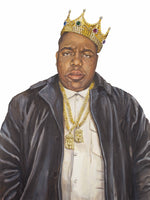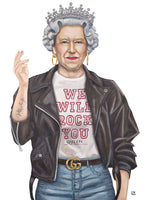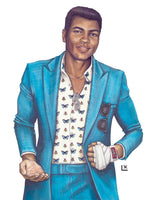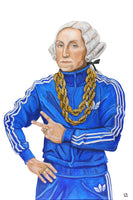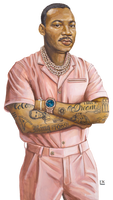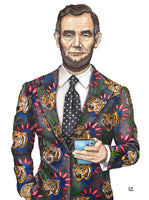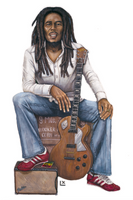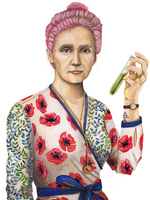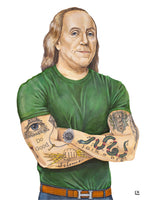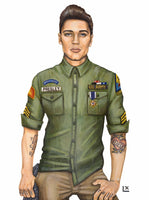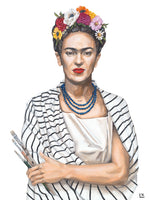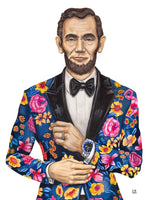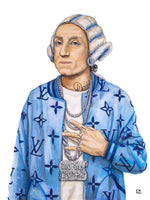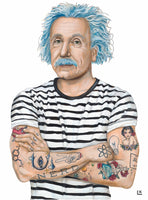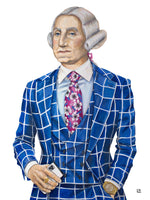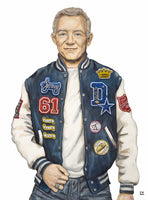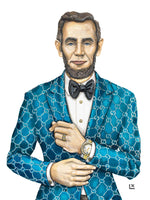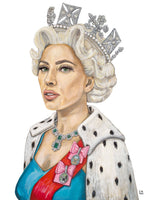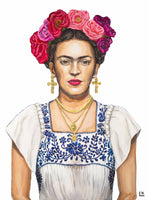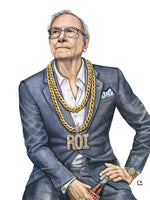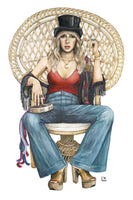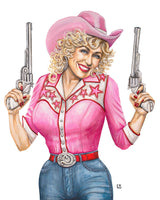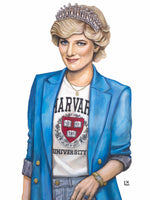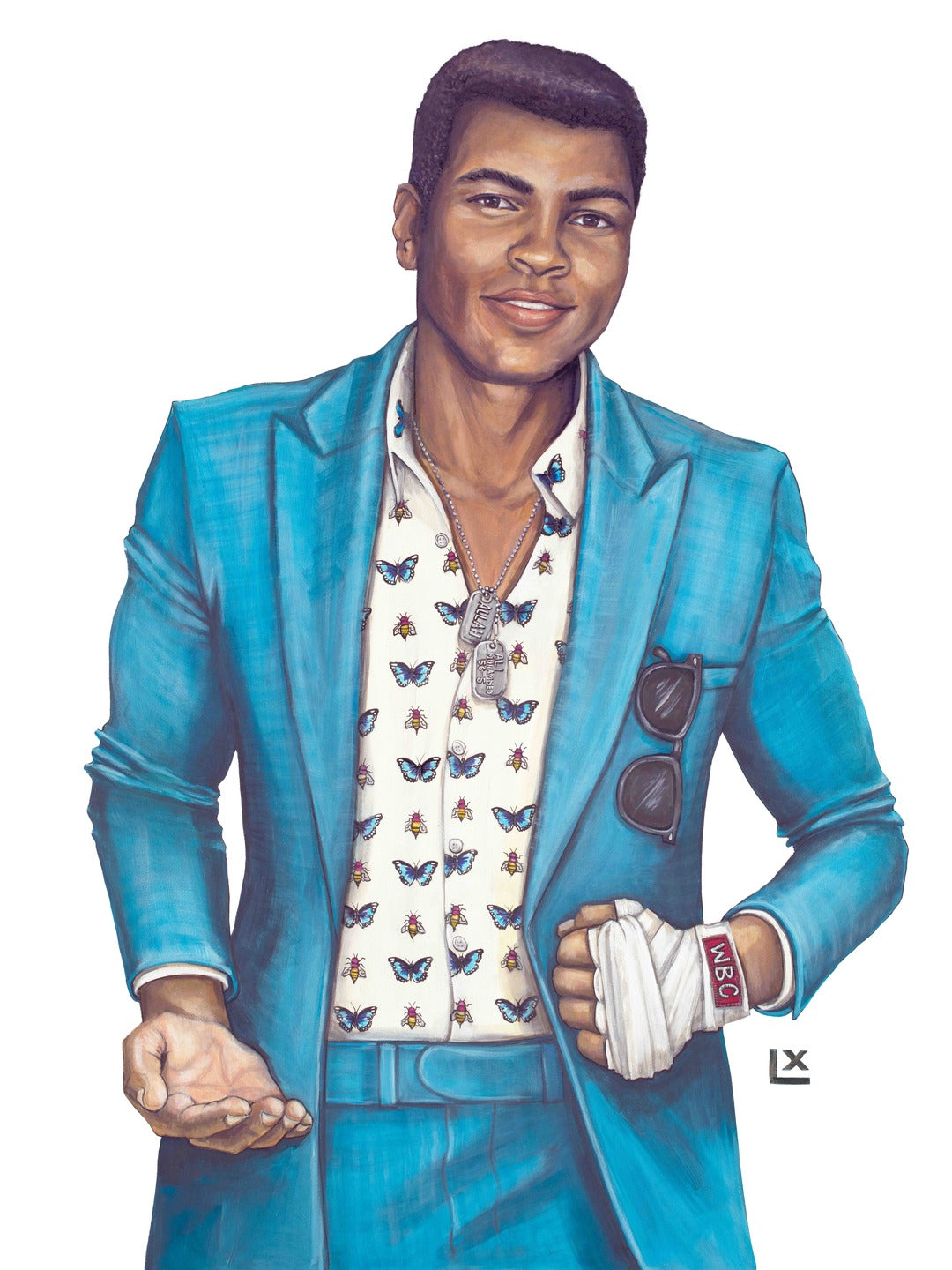

Although the world knew the greatest boxer as Muhammad Ali, he was named at birth Cassius Clay Jr. after his father
who was named after a white abolitionist. Cassius Clay Jr. was a descendant of enslaved people of the antebellum south.

"Float like a butterfly, sting like a bee" - Muhammad Ali

Here, Ali's hand is balled up into a fist, representing the "punches" in the painting's title. His balled fist represents his fierceness in life and in the ring.
Clay grew up poor and racially
oppressed as a black person in
the American South in the 1940’s.
When Ali was 12 years old his bike was stolen. He reported this theft to a police officer, saying if he gets his hands on
the thief he would “whup” them. The officer, Joe, became Clay’s first trainer.
Boxing in the ring and training everyday was a wonderful outlet for many frustrations Clay felt. He always had a quick wit and disarming sense of humor even in the face of racism.
At the age of 19, as the best amateur boxer in the country. Clay won the gold medal
for the USA in the 1960 Rome Olympics.
Cassius Clay proudly wore his medal around Kentucky. One day a restaurant refused him
service. “We don’t serve Negros,” the waiter said. “Well, I don’t eat Negroes, just bring
me a hamburger.” Clay was asked to leave and reports he was so upset he threw his
gold medal into the Ohio river that day.
Trash talk was not the norm in the sport world or even in boxing when Clay appeared on the scene. Clay not only tormented his opponents with trash talk but hyped himself up, describing himself as “the greatest” or “too pretty to lose”.
One of Cassius Clay’s opponents pulled a gun in a crowded casino and fired shots
at him after weeks of Clay’s trash talking.

Here, Ali raises his open hand in prayer. Ali's dedication to his muslim faith and his activism are represented in this gesture of prayer.
By 1985, he had a new mission: He devoted his life to humanitarian aims,
especially in bridging divides between the West and the Muslim world.
In 1990 Ali traveled to Iraq to negotiate the release of 15 American civilian prisoners.

Ali was plain-spoken in challenging white America to look at the black experience, often using his platform to speak about inequality.

Two days after becoming the heavyweight champion of the world, Cassius Clay Jr. announced that he had accepted the teachings of The Nation of Islam and had been given a new name of "Muhammad Ali".
In 1967, Ali fought Ernie Terrell, an opponent who refused to use Ali's new name. Toward the end of the match, Ali could be heard powerfully questioning Terrell, "What's my name?" while landing blows in a fight he ultimately won.
In 1967, at the height of his career and athleticism Ali refused to be drafted and sent to Vietnam. He claimed conscientious-objector status on religious and racial
grounds. He maintained his beliefs and was convicted of draft evading. He stood before an all-white jury and was sentenced to serve 5 years in prison, a $10,000 fine and was stripped of his boxing titles and banned from the sport.
While Ali never actually served in the military, his dog tags signify the battles he fought through his activism.
Punches & Prayers
This is Muhammad Ali. Hover and tap to learn his story...


